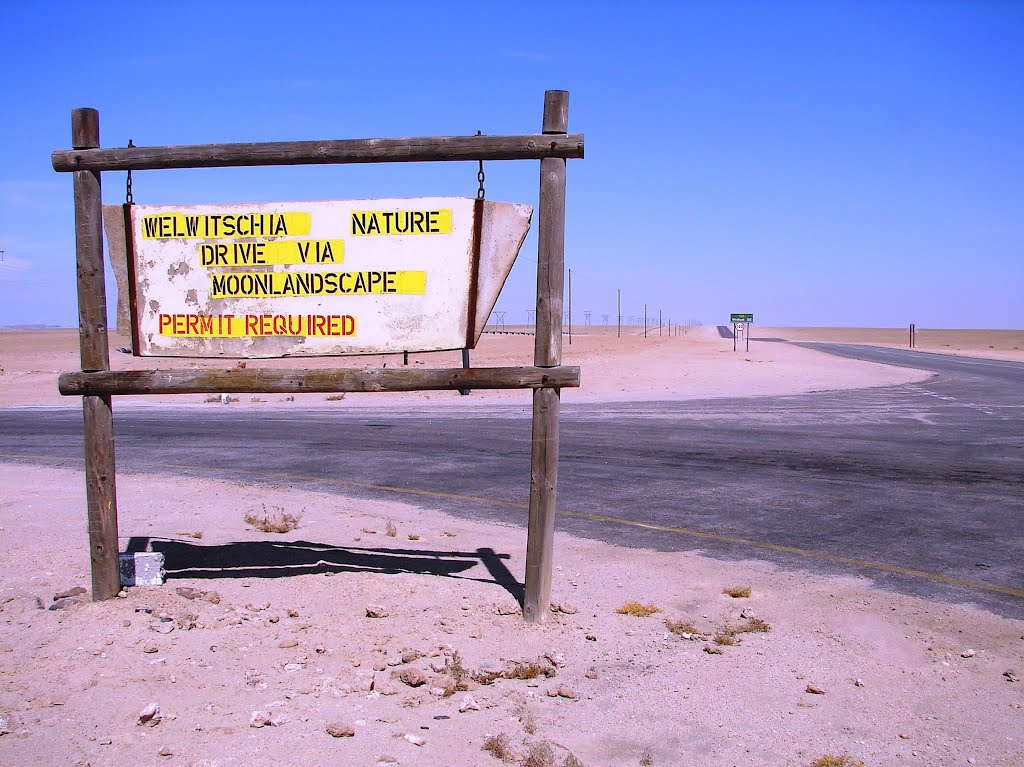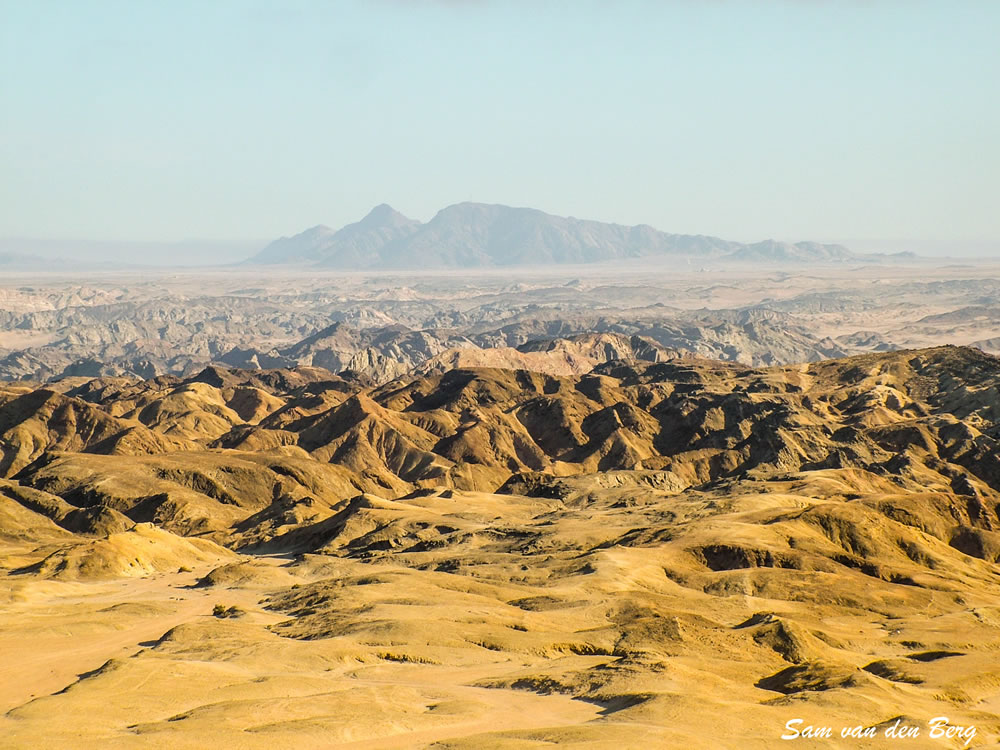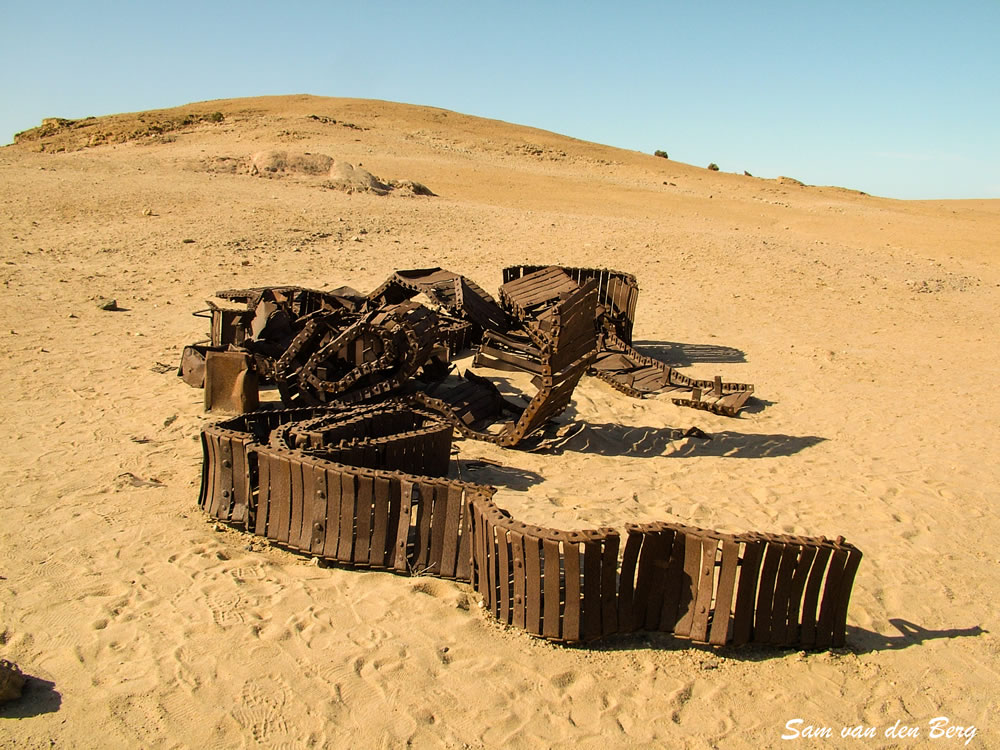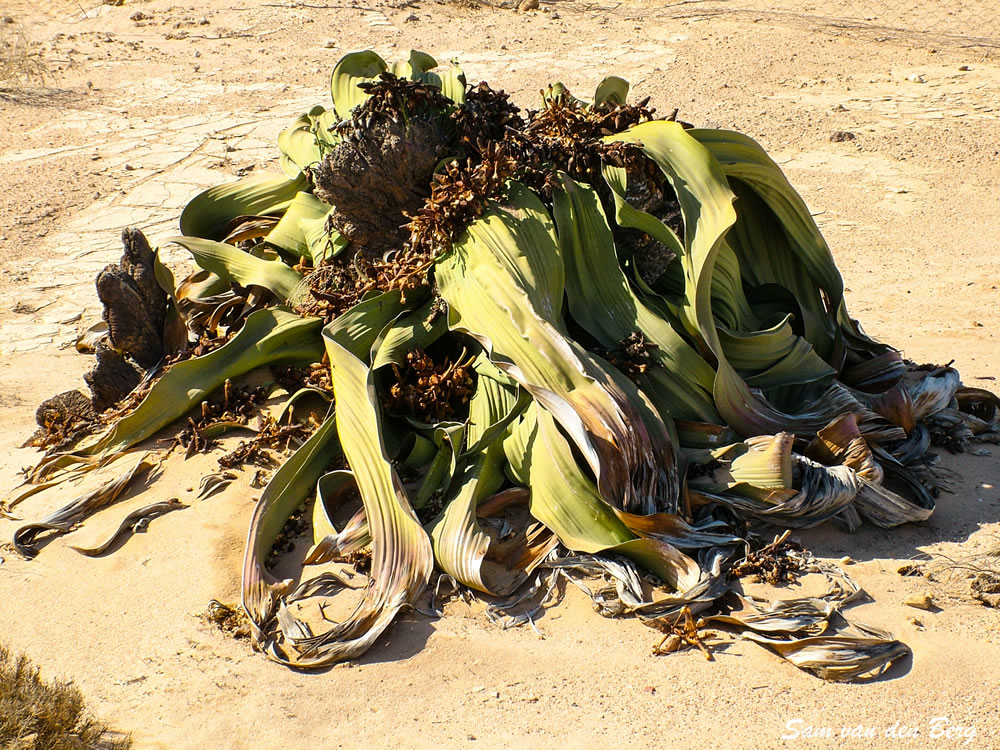Swakopmund Self Drive - Welwitchia Plains
The text are from a brochure issued by the Ministry of Wildlife, Conservation and Tourism and it can be downloaded at the end of this article. Please note there are some minor amendmends to the text based on personal experience.
The Namib Desert is a unique region of splendid and overwhelming beauty. The Welwitschia self drive which falls within the Namib-Naukluft Park, offers one the exiting opportunity of personally discovering various features of this fascinating desert plain.
The round trip by car takes approximately four hours, allowing one to get out at each of the numbered beacons to explore the area with the help of this brochure.
The required permit, which allows entrance to the park as a whole, is obtainable from the Ritterburg Office of the Ministry of Wildlife, Conservation and Tourism in Swakopmund at a minimal cost. If one should decide to stay over in the park, there are many camping sites to choose from, including one on the Welwitschia trail. A camping permit can also be obtained from the Ritterburg Office.
How to get there:
 From Swakopmund follow the tarred road to Windhoek and then turn off onto the Khomas Hochland road (C28) just beyond the Martin Luther steam engine.
From Swakopmund follow the tarred road to Windhoek and then turn off onto the Khomas Hochland road (C28) just beyond the Martin Luther steam engine.
Continue along this road, crossing the Swakop River, until you reach the entrance to the Namib-Noukluft Park. After a short distance you will see the signpost at the start of the trail.
Turn left here.
After a short while you will come across the first of the 13 numbered stone beacons that indicate places of particular interest.
Beacon 1. Xanthomaculina convoluta
At a first glance it would seem that the Namib desert is a dry and barren region, but look again. The ground and stones are covered with a great variety of lichens. They depend for their survival on the mist that moves in from the sea over the desert at night.
Take note of the lichens that look like black fragments of dead plant material. They lie loose on the surface and tend to collect in furrows. Try the following experiment for yourself: Pour a few drops of water onto some of these lichens and watch how they unfold and change colour.
Beacon 2 Desert Vegetaion
Along the way two kinds of drought resistant shrubs are predominant: The Dollar bush - so-called because of its coin-like round leaves, and the Ink Bush, with its fine leaves and spindly appearance. Both these kinds of plants are well adapted to an area which receives an average of less than 20 mm of rain a year, and then mostly in single downpours. Often there is no rain at all for severtal years.
Beacon 3 Tracks in the Desert
Here the tracks of an oxwagon trail, used decades ago, can still be seen where it leaves the present road. The route was called the "Baaiweg" as supplies were transported along here from the coast to the inland. These tracks are still visible today because the lichens that were destroyed by the routes are not yet fully re-established. Lichen grows extremely slowly - less than 1 mm a year! It is therefore most important for the ecology in the area that travellers should keep to existing roads.

Beacon 4 The Moon Landscape
The valleys of the Swakop River form a spectacular moonscape. It came into existence as the river cut through the softer surface deposits. These soft materials were laid down some 460 million years ago when the area's climate was more wet. In the background one can see the Rossing Mountain.
Authors note - There is a turnoff to Goanicontes, a privately owned "Oasis" in the Swakop River. This road continues for about 38 kilometres and join the B1 (The tarred road between Swakopmund and Usakos) near the Rossing Mountain.)
Beacon 5 Lichen Fields
Because of the Namib's exceptional climate with its misty nights, the lichen fields here are more extensive than anywhere else in the world Again one can see how many different kinds of lichens grow here. One may easily mistake a certain lichen for soil, as it has the identical colour. Other lichens, such as those with orange or gray-green "tufts", are much more easy to recognize. An important function of lichens is to fix and stabilise the soil.
Beacon 6 The Moon Landscape
Another view of the valleys of the Swakop River - a spectacular moonscape. In the foreground are furrows caused by erosion. The formation of the moonscape continues!
 Beacon 7 World War 1 Remains
Beacon 7 World War 1 Remains
It comes as a surprise to find remnants of a human sojourn in this desolate landscape.
On this spot South African troops made camp for a few days in 1915 during the First World War.
Along with the broken bottles and rusted cans, one can also see the tracks of an early form of tracked vehicle. Please do not remove anything.
Authors note - The tracks are actually sand tracks to assist vehicles through thick sand and not the tracks of tracked vehicles.
Beacon 8 Dolorite ridges on the hills
To explore the next few beacons ont he trail, one must turn left at the T-junction. On the right there is a clear example of a black ridge of dolerite that snakes across the hills. Dolerits is a hard rock which weathers more slowly than the surrounding rock. This results ina thin band of black dolerite along the hill tops.
Beacon 9 Dolerite
The route now takes one through a dolerite dyke. This is an example of igneous rocks, where molten lava penetrated into a crack in the older grey granitic roack and now forms the backbone of the ridge.
Beacon 10 The Swakop River Valley - Acacia erioloba (Camelthorn)
Compared with the desert plains the Swakop River valley has lush vegetation. The Camelthorn, the Anaboom and the Tamarisk all grow here, and tap the river that flows deep undergrounds. Picnic and camping sites are provided so that one can relax here in the shade. Note the parasite plants that grow on many of the trees. Their sticky seeds are spread by the great variety of birds which frequent the valley.
Beacon 11 The Welwitschia Mirabilis

The Welwitschia Mirabilis is unique to the Namib. It is in fact a coniferous dwarf tree that is related to the pine tree. It appears as though the Welwitschia has many intertwined leaves, but in reality there are only two leaves which continue to grow throughout its lifespan. As time passes these are torn into thinner shreds. The plants are unisexual, and at some places along the trail both male and female plants are marked for easy identification. You might also see the Probergrothius sexpunctatus an insect living and feeding primarily on Welwitchia plants but it is not a role-player during the polination process. (See photos below.)
Beacon 12. Welwitschia Mirabilis
This splendid example of a Welwitschia is estimated to be more than 1 500 years old. No wonder these plants are referred to as living fossils! The heat of the desert sand eventually causes the lower ends of the leaves to wither.
This is also the turning point of the route. Return along the same road to Beacon 8, and continue till you reach the Khomas Hochland Road. Turn right towards Swakopmund.
Beacon 13 Von Stryk Mine
The last beacon on the trail is that of the abandoned Von Stryk Mine. This small, hand excavated iron ore mine was worked during the 1950's, but it was not economically viable in the long run. The mine is still privately owned. The entire Namib Naukluft Park carries relics of prospectors and miners who operated here - mostly before 1965.
Click here to download the brochure. (You will get a paper copy when obtaing the permit at the Ministry of Wildlife, Conservation and Tourism in Swakopmund or Windhoek)
 Beacon 2 - Some Lichens in the early morning mist showing the green sides and giving the lichen fields a green tinge. Once the sun breaks through it will curl up and change to black.
Beacon 2 - Some Lichens in the early morning mist showing the green sides and giving the lichen fields a green tinge. Once the sun breaks through it will curl up and change to black. Desert scene with the early morning mist bringing life giving moisture to the plants. Visible are some Ink Bush.
Desert scene with the early morning mist bringing life giving moisture to the plants. Visible are some Ink Bush.- More InfoMartin Luther Steam Tractor SwakopmundIn 1894 the German artist, Troost, tried to replace the tedious ox-wagon traffic on the "Bay Road" from Swakopmund into the interior by the implementation of a steam traction engine, but it did not succeed to operate under the...
- Swakopmund
- Sightseeing
- History



























